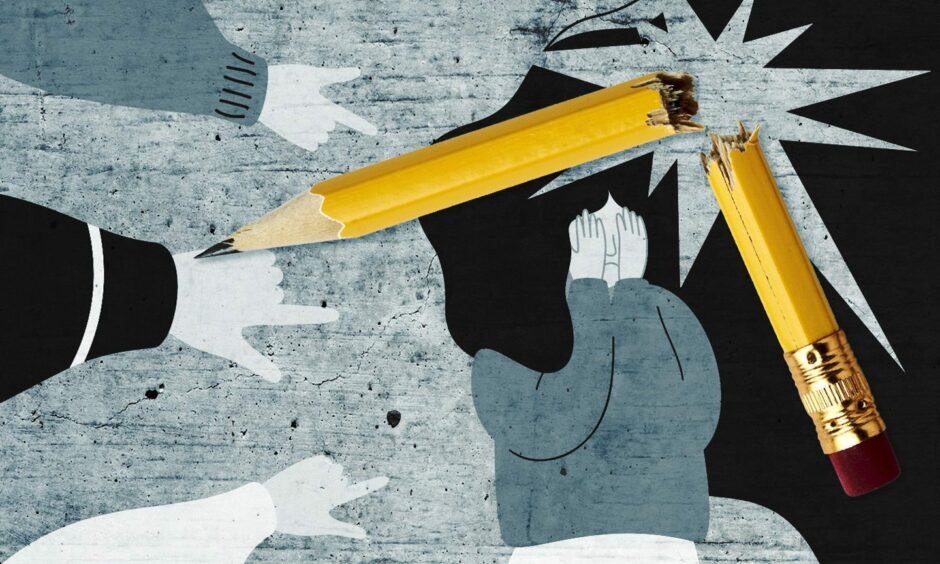
Children are being exposed to shocking classroom violence as a result of Scotland’s ‘inclusion policy’, a former primary teacher has claimed.
Physical and verbal assaults occur regularly in schools she taught in, she said, including chairs being flung and teachers and other pupils kicked, punched and even bitten.
Entire classes are evacuated when a child ‘kicks off’, she said, and parents are not informed despite the potential trauma to their child.
The problem is exacerbated, she said, by the Scottish Government’s presumption of mainstream education for children with additional support needs.
Often, she said, this leads to children with behaviour issues being taught in regular classes when they should be in a special school or support unit.
The former teacher lives in Angus and worked on supply and in temporary posts in schools in the region and elsewhere.
While there were other reasons for her quitting the profession, the violence and abuse she witnessed were a contributing factor.
School violence and inclusion policy
The government’s inclusion policy is “great on paper”, she said, but added: “There doesn’t seem to be any plan for children who are violent.
“I’ve seen children lashing out at other children, I’ve seen a teacher punched.
“I’ve seen fights break out in the classroom, I’ve seen a child bitten in the face.
“I’ve seen children trying to climb out of windows, break windows, throw chairs at windows.
“I’ve seen teachers in tears on a daily basis because their class is horrific.”
And she said witnessing such incidents can frighten and traumatise classmates.
“What happens when a child kicks off is they evacuate the whole class.
One little girl wet herself, she was so terrified of this one child.”
“These are just little children, they shouldn’t be going through this, and their parents aren’t told this has happened.
“One little girl wet herself, she was so terrified of this one child because every time they were around they were throwing things or children were getting hit.”
Violence and disruption in classrooms are becoming “more and more normalised”, she claimed, and teachers feel to blame if they can’t prevent it.
“As teachers,” she said, “we are trained that it’s our responsibility to change the environment of the class to help minimise this behaviour.
“So when you are a teacher you feel like you are failing your class when something like this happens.
“But children can go from nought to 100 in a second, and sometimes there are no triggers.”
Children with additional support needs should be taught in a mainstream class unless their case meets one of three exceptions, according to government policy.
One of the exceptions is incompatibility with the efficient education of classmates.
But the teacher claimed violent pupils often disrupt the education of their peers and demand an inordinate amount of their teacher’s time.
She said: “Children who are disruptive should be in a nurture environment where they are safe and not able to hurt other children until they feel ready to come to school and learn.
“I feel sorry for the other children in classes like this; there’s no learning going on because the teacher is busy dealing with this.”
Around a third of Scotland’s school pupils are classed as having additional support needs of some kind, whether for conditions such as autism or ADHD, learning disabilities, language barriers, emotional trauma or numerous other reasons.
Is your child suffering due to the presumption of mainstream education for those with additional support needs? Get in touch with your story.
Teaching union the EIS reckons incidents like the teacher describes are significantly under-reported and is surveying members to establish their prevalence.
Its Stand Up for Quality Education campaign aims to improve support for pupils with additional support needs and tackle pupil indiscipline.
A spokesperson said: “While the EIS does not comment on individual schools or cases, clearly all pupils and school staff should have the right to work in a safe and secure environment in our schools.
“The recent increase in the number of reported instances of violence in our schools is a matter of significant concern, and must be treated seriously by local authorities and the Scottish Government.
“Schools cannot solve all of society’s problems in isolation and need better support to ensure that the needs of all young people can be met in a suitable and safe environment for pupils and staff.”
When is mainstream school not suitable?
The government says Scotland’s presumption of mainstream schooling is a central pillar of its inclusive approach to education.
Where there are doubts about whether a child is suited to mainstream school education authorities must consider whether their case meets the exceptions.
These are that mainstream education:
- would not be suited to the ability or aptitude of the child;
- would be incompatible with the provision of efficient education for the children with whom the child would be educated;
- would result in unreasonable public expenditure being incurred which would not ordinarily be incurred.
Pupil behaviour summit
Education Secretary Jenny Gilruth announced a summit on pupil behaviour just months after The Courier lifted the lid on the scale of the problem locally.
A Scottish Government spokesperson said: “The Education Secretary has taken a lead role on behaviour and relationships in our schools since her appointment and has already convened the first stage of the behaviour summit on the issue, with the second stage taking place next month.
“The views and experiences of schools staff will be central to the summit process, which is focusing on practical support at classroom, school and local level to make a difference on this issue.
“A multi-stage approach to the summit is planned to ensure the issues are considered in detail and to allow the later stages of the summit to benefit from the latest data following the publication of the behaviour in Scottish schools research.
“This research will provide a robust national picture in relation to behaviour in Scotland’s schools when it publishes in autumn this year.
“Most children and young people’s needs are met through a universal level of support – which includes adapting learning and teaching approaches.
“Clear exceptions have been set out in legislation since 2002 to enable pupils with additional support needs to learn in a special school or in a specialist unit, where this is considered to be best suited to their individual circumstances.”
Angus Council said all incidents of violence and aggression are taken seriously, recorded by schools and closely monitored by managers.
A spokesperson said: “Every one of our schools in Angus, including nine specifically resourced primary schools, has children with additional support needs. Some of those children may present with behaviours that challenge.”
Individual plans for these children are regularly reviewed and include specific strategies and interventions, they said.
“Any significant or repeated incidents are responded to in an appropriate and measured way.
“For example, debriefing may be offered along with advice and training on matters including de-escalation, preventing and managing behaviours that challenge, and CALM (crisis, aggression, limitation and management).
“Further to this, all our education staff are undertaking national training in trauma skilled practice to ensure understanding of behaviour through a trauma-informed lens.”
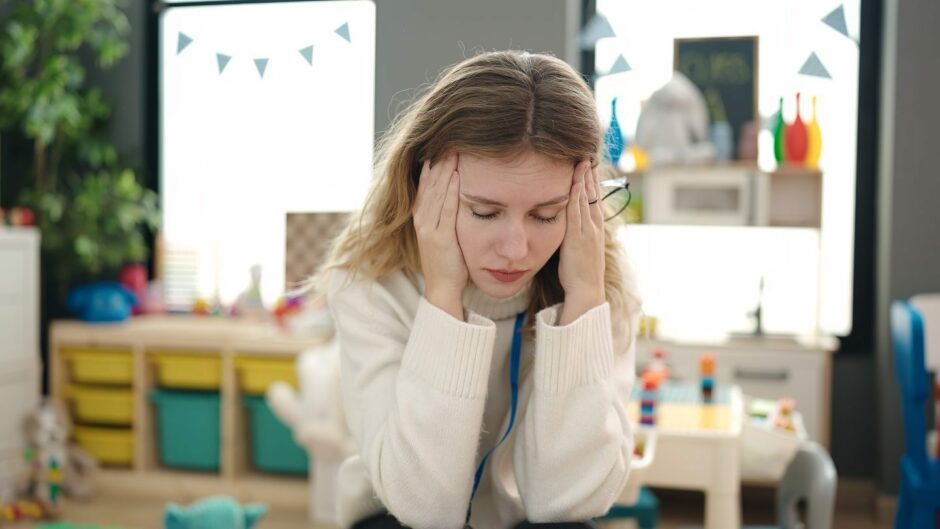
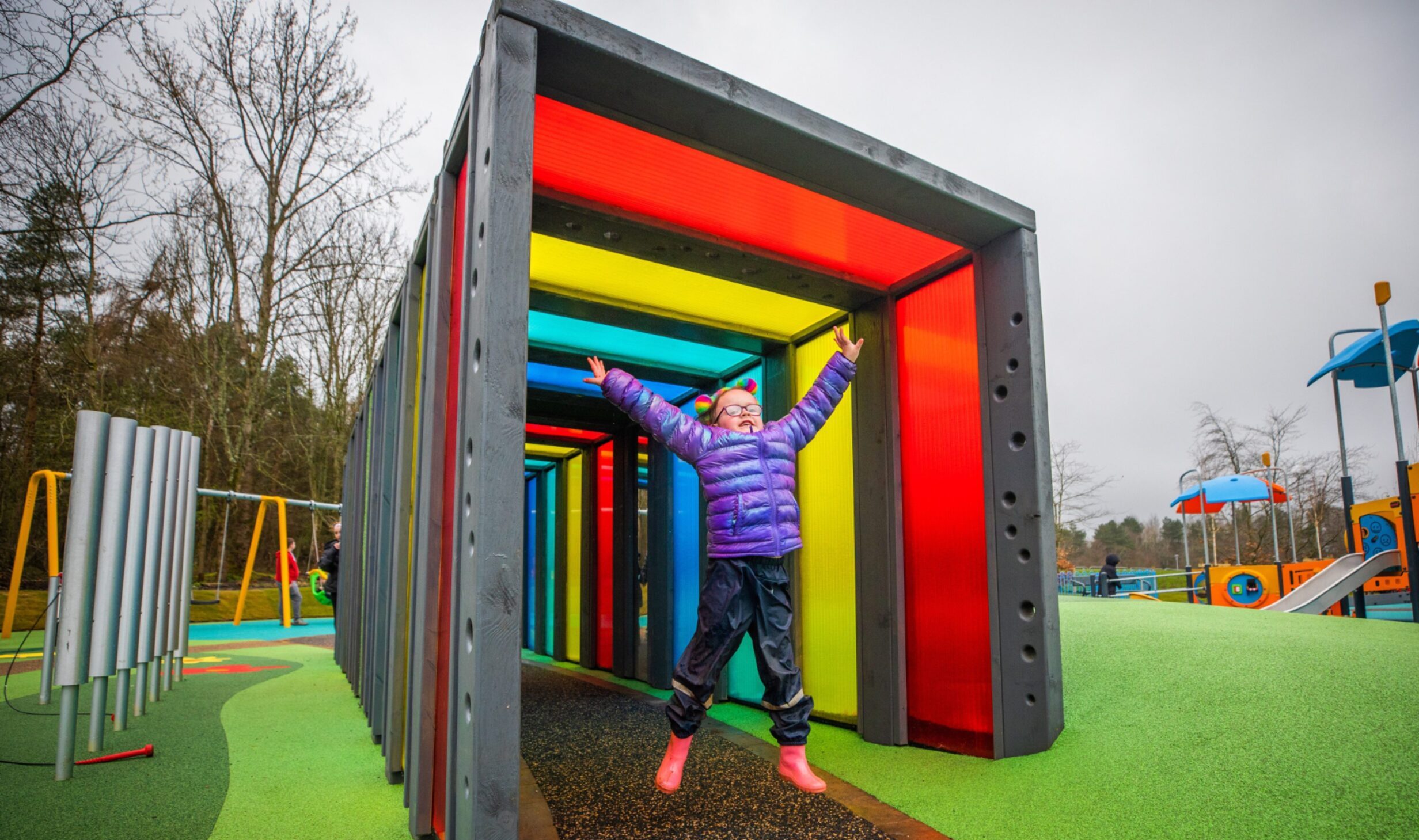
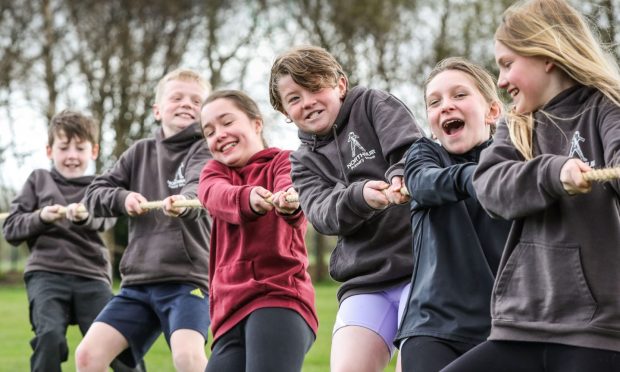


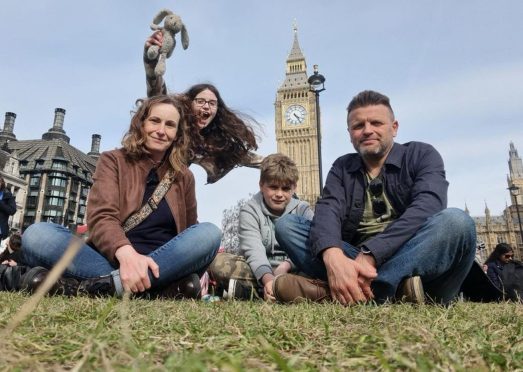





Conversation